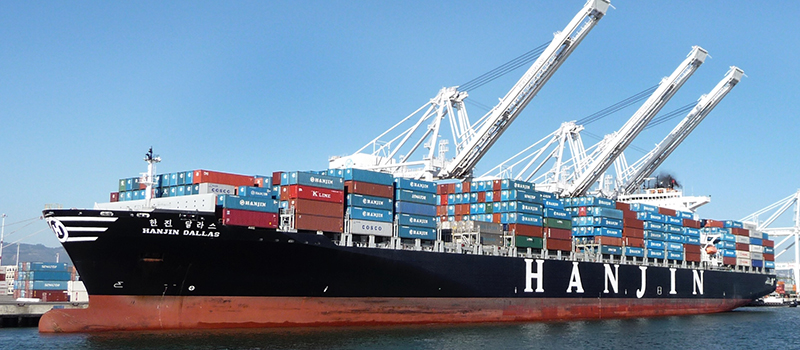Descartes January Global Shipping Report points to declining import volumes

In its January Global Shipping Report, which was issued this week, Waterloo, Ontario-based Descartes, a provider of logistics based on-demand, software-as-a-service offerings, noted December United States-bound container imports trended down.
This is the 18th edition of the Global Shipping Report, going back to its debut in August 2021.
A key takeaway of the report highlighted that December U.S. container import volumes saw a mild decline, down 1.3% compared to November, at 1,929,032 TEU (Twenty-Foot Equivalent Units), with a 21.3% annual decline. What’s more, December’s tally came in 1.3% ahead of December 2019, prior to the onset of the pandemic.
“Comparing fall imports in 2022 to the previous six years, the slight decline in December 2022 volume versus November 2022 was consistent at -1.3%,” said Chris Jones, EVP Industry & Services at Descartes, in a statement. “Imports from China also declined, but even more slowly at -0.5%. The December U.S. container import data points to less pressure on supply chains and logistics operations, but there are still a number of issues that may cause further disruptions in 2023.” The only exception in comparing December to previous years was December 2018, which saw a 7.7% annual increase, with importers pulling forward shipments in order to get around China tariffs that went into effect in early 2019.
Among the main issues with the potential for further disruptions cited in the report were COVID continuing to be a factor, the ongoing decline of Chinese-origin imports into the U.S., with a 0.5% decline, from October to December (as well as steeper declines out of South Korea, down 15.1%, and India, down 10.6%), and the unresolved West Coast labor situation).
Looking at sequential volume performance for individual ports, Descartes reported that volumes at half of the top 10 U.S. ports saw sequential gains, led by the Port of Los Angeles, with a 14.0% increase, Seattle (up 16.4%) and Norfolk (up 10.5%) rounding up the top three. On the other end, the Port of Houston and Port Authority of New York/New Jersey, down 24.0% and 8.3%, respectively.
What’s more, the report observed that the top West Coast ports made up market share lost to top East and Gulf Coast ports in past months. When comparing the top five West Coast ports with the top five East and Gulf Coast ports, Descartes observed that West Coast ports represented 38.1% of total container import volume and was up 1.2% compared to November, whereas East and Gulf Coast ports, fell to 45.5% of total volume, and were off 1.7% compared to November. And Descartes noted that the top 10 U.S. ports saw share decline compared to smaller ports, with 83.6% of total volume in December, down from November’s 84.1% mark, and 85.9% annually.
In an interview, Jones explained that while volumes appear to be returning more of a pre-pandemic rhythm, challenges remain, in the form of the West Coast labor situation needing to reach a positive outcome, as well as other issues.
“Carriers are still trying to maintain some level of control over pricing, and there are still blank sailings going on,” said Jones. “And China is going to go through some challenges here for the foreseeable future, as it tries to right-size themselves in regards to its pandemic response and performance [with data indicating there is 50% accuracy in schedules, 20% below pre-pandemic levels]. There are still some challenges from a reliability point of view.”
On a more positive note, Jones pointed to how the report cited that December port delays decreased compared to November [Descartes defines port delays as the difference measured in days between the Estimated Arrival Date initially declared on the bill of lading and the date when Descartes receives the CBP-processed bill of lading], with the major East Coast ports seeing the greatest decreases, with no double-digit wait times, with West Coast ports are below 10 days and now “somewhat stabilized.” The report observed that these improvements are due to the lower volumes seen in most ports, at the moment.
“Delays are not necessarily due to the ports; slow sailing can be a factor, or some other ‘micro level’-type of things we are seeing,” he said. “There is still some variability out there, and, for the most part, I think that is going to be the biggest headache for shippers. The whole notion of tightening up supply chains again is probably not going to happen, because there is still some variability out there. The thing for 2023 is we will be better off, but we won’t be anywhere back to where we were, in terms of predictability.”

Article Topics
3PL News & Resources
April Services PMI contracts after 15 months of growth, reports ISM 2023 industrial big-box leasing activity heads down but remains on a steady path, notes CBRE report Q1 U.S. Bank Freight Payment Index sees shipment and spending declines Ryder opens up El Paso-based multi-client facility logistics facility April manufacturing output takes a step back after growing in March TIA rolls out updated version of framework focused on fighting freight fraud National diesel average is down for the third consecutive week, reports EIA More 3PLLatest in Logistics
April Services PMI contracts after 15 months of growth, reports ISM 2023 industrial big-box leasing activity heads down but remains on a steady path, notes CBRE report U.S. rail carload and intermodal volumes are mixed in April, reports AAR Q1 U.S. Bank Freight Payment Index sees shipment and spending declines S&P Global Market Intelligence’s Rogers assesses 2024 import landscape Pitt Ohio exec warns Congress to go slow on truck electrification mandates Q1 intermodal volumes are up for second straight quarter, reports IANA More LogisticsAbout the Author
Subscribe to Logistics Management Magazine

Find out what the world's most innovative companies are doing to improve productivity in their plants and distribution centers.
Start your FREE subscription today.
May 2024 Logistics Management

Latest Resources














